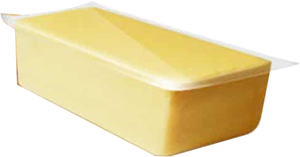

Cheese is a nutrient-dense dairy product, a good source of protein, minerals particularly calcium and phosphorus, but is susceptible to physical, chemical and biochemical spoilage. Therefore, extension shelf life of this dairy food is very important.
According to literatures, modified atmosphere packaging (MAP) is one of the methods for cheese shelf life extension.The potential of MAP for extending commercial life of cheese has been clearly demonstrated, although cheese packaging is dependent on the type of cheese, the starter used during manufacturing and storage conditions, among very important parameters (Gammariello et al .,2009). MAP has been studied for many types of cheeses in occasions to different conclusions.
The use of protective atmospheres made up of 100% N2 or 100% CO2 has often proved unsuitable for packaging of hard or semi-hard long ripened cheeses such as Cheddar cheese (Colchin et al ., 2001), Parmigiano Reggiano cheese (Romani et al ., 1999) and Samso cheese(Juric et al ., 2003), as it does not guarantee an optimal preservation and negatively influences the product‘s organoleptic characteristics, thus making the use of different mixtures of the two gases preferable. Conversely, carbon dioxide concentrations ranging from 10-50% have given interesting results both for preservation and for sensory characteristics of several dairy products, such as Cottage cheese (50% CO2) (Fedio et al ., 1994), Parmigiano Reggiano cheese (30% CO2) (Romani et al ., 2002), Samso cheese (20% CO) (Juric et al ., 2003), Taleggio cheese (10% CO2) (Piergiovanni et al ., 1993).
Generally, when packaging fresh cheeses, atmospheres with a high CO2 concentration (75%) guarantee the best preservation, since CO2 inhibits microbial growth; has no negative effect on product (Eliot et al ., 1998; Maniar et al ., 1994; Mannheim and Soffer, 1996).
Table: Literatures Reference On Modified Amosphere Packaging Of Cheese



